It's sometimes difficult to believe that genuine innovation is possible in the cycling world - after all, big brains have had over 200 years to refine the bicycle and its related paraphernalia.
Clipless pedals have been around for a relatively short period of that time. Invented by Jean Beyl in the early 1980s while working on ski bindings for Look, Beyl went on to co-found Time where he improved the pedals by adding float that allowed the foot to move on the pedal.
Since then, numerous variations have emerged but the basic principle of a physical locking interface between shoe and pedal has been a given for virtually every design.
But not all; the team at Magped have worked out something a little different. Their design uses a magnet in the pedal body and corresponding metal plate in the cleat to secure the connection between foot and bike.
The range includes road, gravel and MTB variants, and in recent weeks we've had a pair of the Magped gravel pedals for review.
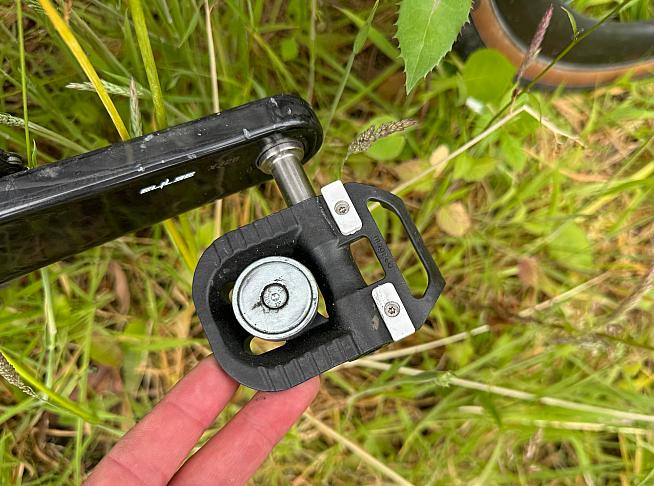
The spec sheet is promising: equipped with titanium spindles, the Magped gravel weigh in at a very light 212g per pair. That's impressive for an off-road pedal, with perhaps only Crankbrothers top-tier (and much more expensive) Eggbeater 11 able to significantly undercut it, at 178g a pair.
I was intrigued to see how the Magpeds compared to my more conventional clip-ins, the also lightweight Xpedo M-Force 8.
First impressions of the Magped pedals based on the packaging were excellent: the pedals come in a nicely designed presentation box, with the cleats and various fittings neatly packaged in white paper.
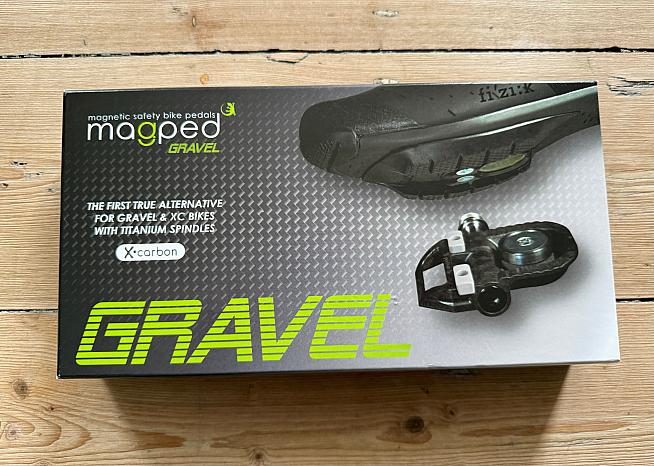
The Magped system is simple enough: a magnet in the pedal pairs to a metallic plate in the 'cleat' on your shoe, with magnetic force replacing the conventional physical locking of cleat to pedal.
Set up is a little different to a standard pedal, but it's easier than it first appears. Simply attach the cleat to your shoe using the two bolts provided, then dial in the height of the magnet on the pedal using the provided allen key. The idea is to leave a 1mm recess between the cleat and the shoe tread.
The final step is to attach two spacers to each pedal. Three sets of spacers, low medium and high, are provided and these allow you to close up the gap between shoe lugs and pedal allowing for a more secure feeling connection.
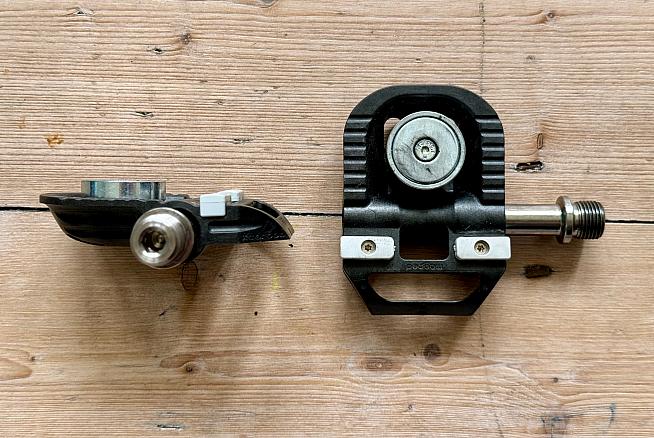
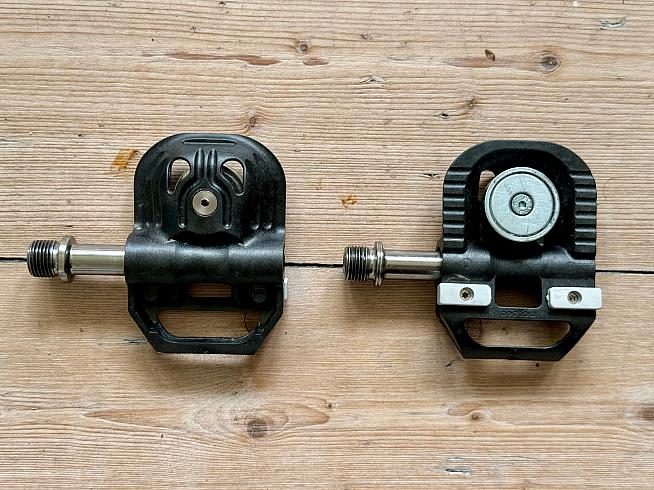
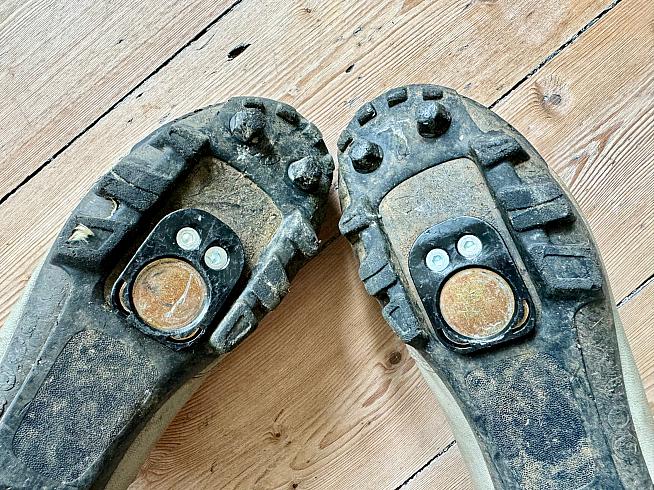
Magped have provided a brief and clear video tutorial, and it all took no more than 15 minutes, as a first-timer, to get the pedals set up.
Fitted on the bike, the first obvious difference to my usual spd pedals is the Magped are one-sided. I've ridden road pedals for years, so this wasn't entirely unfamiliar but it does mean you have to pay a little more attention when clipping in compared to a typical dual-sided MTB or gravel pedal.
However, the magnets provided are powerful and with an audible click my shoe found the pedal and I was off.
The ride feel from the Magpeds is really excellent; I immediately noticed an improved sense of power transfer and stability from the relatively big contact area of the pedal compared with a spd cage.
There is in theory infinite float - you can rotate the shoe 360 degrees on the pedal, if you wanted (your knees may object) but the magnetic connection takes considerable force to overcome, so while you can wiggle your foot side to side to hit the right position you will notice resistance: there's none of that "skating on ice" feeling that can come on some pedals with a high degree of float.
As for accidentally lifting my foot off the pedal, no chance. This was my biggest concern about the magnet design, that it might come unclipped during a heavy effort, but nothing I could muster in or out of the saddle was enough to budge the cleat from the pedal once attached.

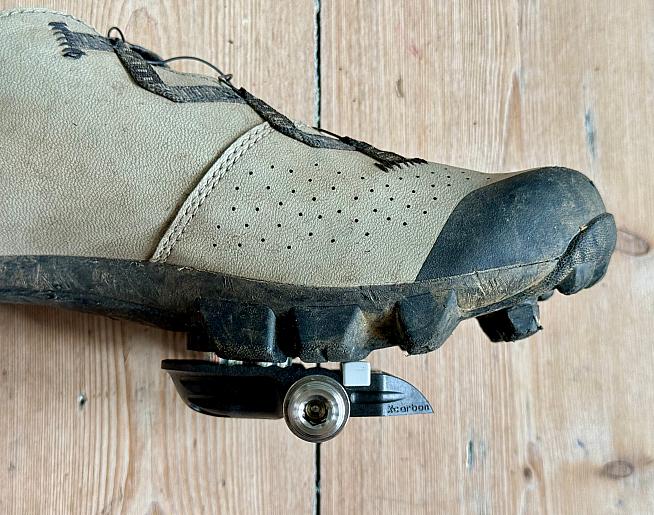

So far so good then: what about when it came time to unclip?
The action to disengage your shoe from the pedal is pretty similar to a standard pedal: twist the heel and lift your foot at the same time. It works well... at least, for your first foot.
I found that disengaging the second foot was a little tricker, which I think is because of the angle at which I typically hold the bike when dismounting. The second foot, initially at least, required a bit of jiggling to disengage completely.
It's quite possible I've simply not worked out the correct technique yet; in any case, it's not a big deal - the most important thing at traffic lights etc is getting one foot down, which is no more difficult than a standard pedal.
In use, I'm highly impressed with the Magped design, in particular the stability and power transfer. In this respect it feels like a road pedal - but with the advantages of an off-road spd pedal when it comes to walking the bike.
The recessed shoe plate, sitting safely below the tread of your off-road shoes, makes light work of cafe stops or hike-a-bike, and the flat, flush surface of the magnet and cleat means there's far less scope for muck and grass etc to get jammed into the cleat crevices as happens regularly on my spds.
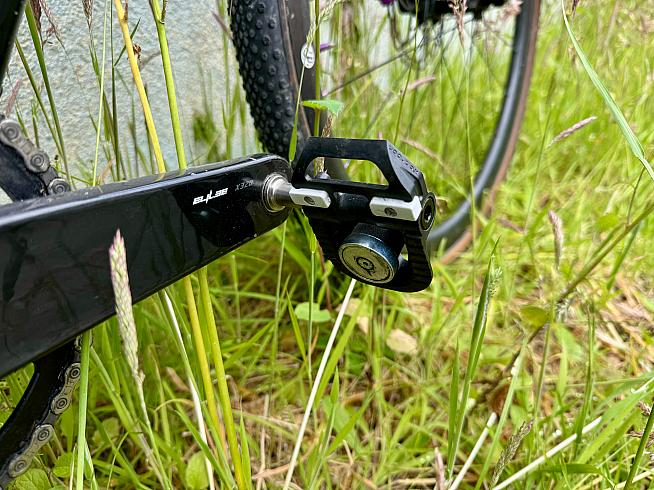

As for longevity of the cleat, it will be interesting to see how they bear up to long-term use. The brassy coating on the metal shoe plates wears off quickly, albeit with no effect on function, and I see no signs of wear to the durable plastic part of the cleat as yet. Spares are readily available from the Magped website should the time come.
The pedal body, made of heavy duty xCarbon, still looks box fresh - if only because I've not managed to bash it off any rocks yet.
Magped say the magnets will not lose strength over time. They do sell spares on their site, but this is aimed at riders looking to adjust the strength of the magnet - they come supplied with 200N magnets, recommended for riders over 45kg in weight, but less powerful 100N and 150N magnets are available priced from €10-€15 a pair.
Incidentally, you can also tune the force on your pedals by winding the magnet up or down slightly so some adjustment is possible.
As for maintenance, the spindle can be simply removed with a couple of allen keys when it comes time to grease or renew the bearings. Again, Magped provide a nice, clear video tutorial on the process.
Overall, Magped is an interesting, innovative and very impressive product with some clear advantages over standard clip-in pedals. If you're looking for a lightweight, low maintenance set of pedals with a stable platform and a very secure connection then I would highly recommend them.
The only drawback I've found is the fact they're one-sided, and the occasional slight faff in unclipping the second foot which may deter off-roaders who find themselves clipping in and out with regularity.
In some ways the design perhaps lends itself more readily to road cycling, and in fact a visual comparison with the Magped road suggests there is very little difference in the two models, other than a few grooves in the pedal body on the gravel version presumably to enhance grip with the tread on off-road shoes.
They are the same weight too, so your choice may come down to whether you have 2-bolt off-road shoes or three-bolt road shoes.
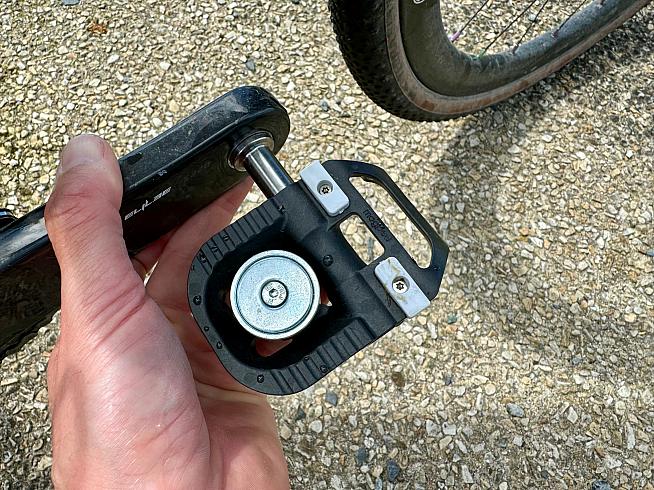
Magped are onto a winner here I feel. It's easy to imagine a parallel universe in which Jean Beyl slept in and missed his job interview at Time, the clipless system was never invented and we all ride magnetic pedals - because really, the system works very well.
If Magped can figure out a two-sided pedal, I would genuinely struggle to make a case for choosing clunky mechanical clip-ins.
Yes, they may be different, but don't let that put you off the Magped gravel pedal. The full house of five-star customer reviews on their website is no surprise, nor is the fact they scooped a Design & Innovation Award in 2023: this is an excellent product.
For riders combining road and gravel cycling Magped offer a compelling, high-quality alternative to convention, with characteristics suited to both disciplines in one sleek and very attractive package.
Magped Gravel Pedal, €189 / £160 at www.magped.com
0 Comments





